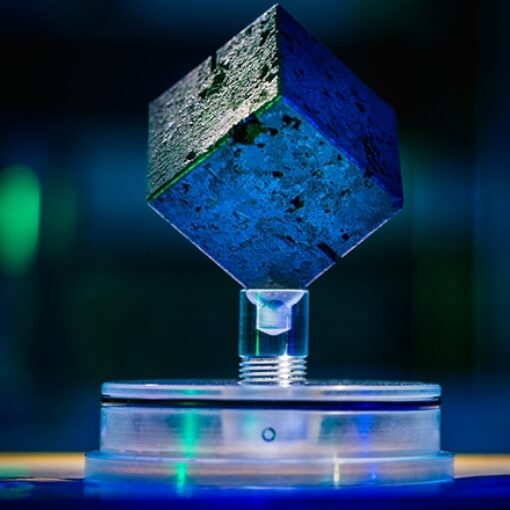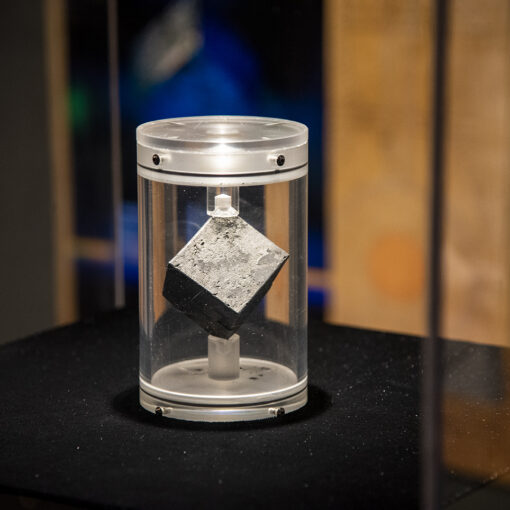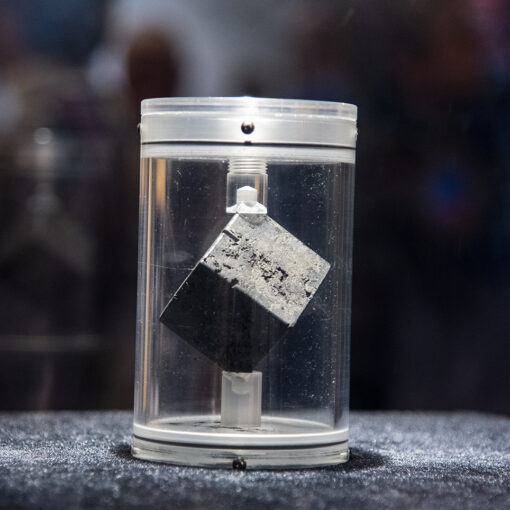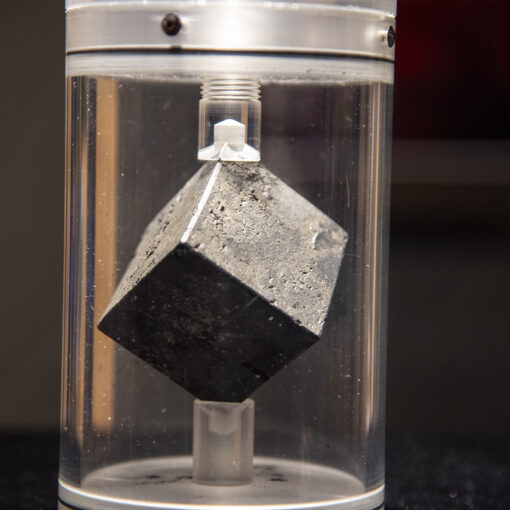Exhibits
Dark Cube: Heisenberg’s Race for the Bomb
Photo credits: John T Consoli of UMD (top left photo) and Matthan Brown of National Museum of Nuclear Science & History (top right and bottom photos)
The National Museum of Nuclear Science & History is proud to display the special exhibition, “Dark Cube: Heisenberg’s Race for the Bomb". This exhibition focuses on a dense, two-inch charcoal-black cube made of pure uranium metal that Nazi scientists suspended with 663 other similar cubes during World War II in an effort to create the world’s first atomic bomb.
During Hitler’s rise to power, Germany was at the cutting edge of nuclear technology, having discovered how to split the atom and then realizing the immense amount of energy that is released in doing so. This intriguing object - on loan from Dr. Timothy Koeth, Assistant Professor in the Department of Materials Science and Engineering at the University of Maryland with appointments in the Institute for Research in Electronics and Applied Physics (IREAP) and the Institute for Physical Science and Technology (IPST) – will be highlighted in telling the story of Heisenberg’s efforts and eventual failure to create an atomic weapon during a critical time in world conflict.
“From a historical perspective this cube weighs a lot more than five pounds,” said Dr. Koeth. Made of natural uranium, this cube was one of 664 cubes suspended together in an almost chandelier-type setting, created in the attempt to make what was believed to be Germany’s first working nuclear reactor.
Though Heisenberg’s team came close to achieving a chain reaction, they were unsuccessful in completing their goal. There were many reasons that lead to this failure; these included lack of leadership to fully push the project to completion, many of Germany’s most gifted physicists were Jewish and were forced to leave Germany due to Hitler’s quest for racial purity, money and materials were in short supply and other technical difficulties.
Though there were originally 664 cubes, over 650 still remain unaccounted for. “The National Museum of Nuclear Science & History is proud to display such an important piece of history,” said Jim Walther, Museum Executive Director. “This is one of the only institutions in the nation where one of Heisenberg’s uranium cubes can be seen for public viewing, and we look forward to sharing this pivotal time in history with our visitors.”
This special exhibition is included with museum admission. For more information, please call 505-245-2137.







